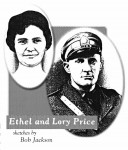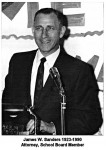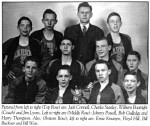 Marion’s bloody history has been the subject of numerous books, articles and documentaries. “Bloody Williamson,” Paul M. Angle’s widely read story of our county, is still in publication after more than half a century. Perhaps one of the reasons for the intense curiosity about our past is the baffling contrast between the genuine warmth and friendliness of the people you meet today and the violent heartlessness of some who lived here just one or two generations ago. No story better illustrates this paradox than the tragedy of Lory and Ethel Price. Continue reading
Marion’s bloody history has been the subject of numerous books, articles and documentaries. “Bloody Williamson,” Paul M. Angle’s widely read story of our county, is still in publication after more than half a century. Perhaps one of the reasons for the intense curiosity about our past is the baffling contrast between the genuine warmth and friendliness of the people you meet today and the violent heartlessness of some who lived here just one or two generations ago. No story better illustrates this paradox than the tragedy of Lory and Ethel Price. Continue reading
Monthly Archives: September 2013
 Marion has had its share of heroes over the years. The subject of this work is World War II and how one of our local citizens answered the call.
Marion has had its share of heroes over the years. The subject of this work is World War II and how one of our local citizens answered the call.
We had a family here in Marion that sent four of its sons to the service and only one survived. In Williamson County we had two sons from Paulton that died in prisoner of war camps. We have other families that sent four and five of their sons to the effort. The first casualty of the war from Marion was a man who died in the attack on Pearl Harbor by Japan and he is still entombed in the Battleship Arizona. Continue reading
 With Marion’s eighth grade boys basketball ream experiencing such a fine year in 2007, it is only fitting that we reflect back to a year long ago when Marion won the State Championship.
With Marion’s eighth grade boys basketball ream experiencing such a fine year in 2007, it is only fitting that we reflect back to a year long ago when Marion won the State Championship.
The year was 1944; it was a single class system back then. The Sectional Tournament in 1944 was held in DuQuoin. Continue reading
The handwriting must have been on the wall for U.S. involvement in World War II prior to 1939 when war broke out in Europe. News articles from 1938 noted our vulnerability in placing our air corps bases and armament stockpiles in coastal locations. In those times, Southern Illinois had 61 percent of the population on welfare, one of the highest in the nation and more people in this end of the state were out of work than those working. Continue reading
In 1915, the Ku Klux Klan, “a movement dedicated to organized intolerance,” was revived near Atlanta, Georgia, after a dormancy of forty-five years. The Klan appeared to be a small and harmless order, predicated on southern sentimentalism and mild patriotism, until 1920-21, when its organization and national officers were changed. From then on, its spread was rapid. Continue reading










